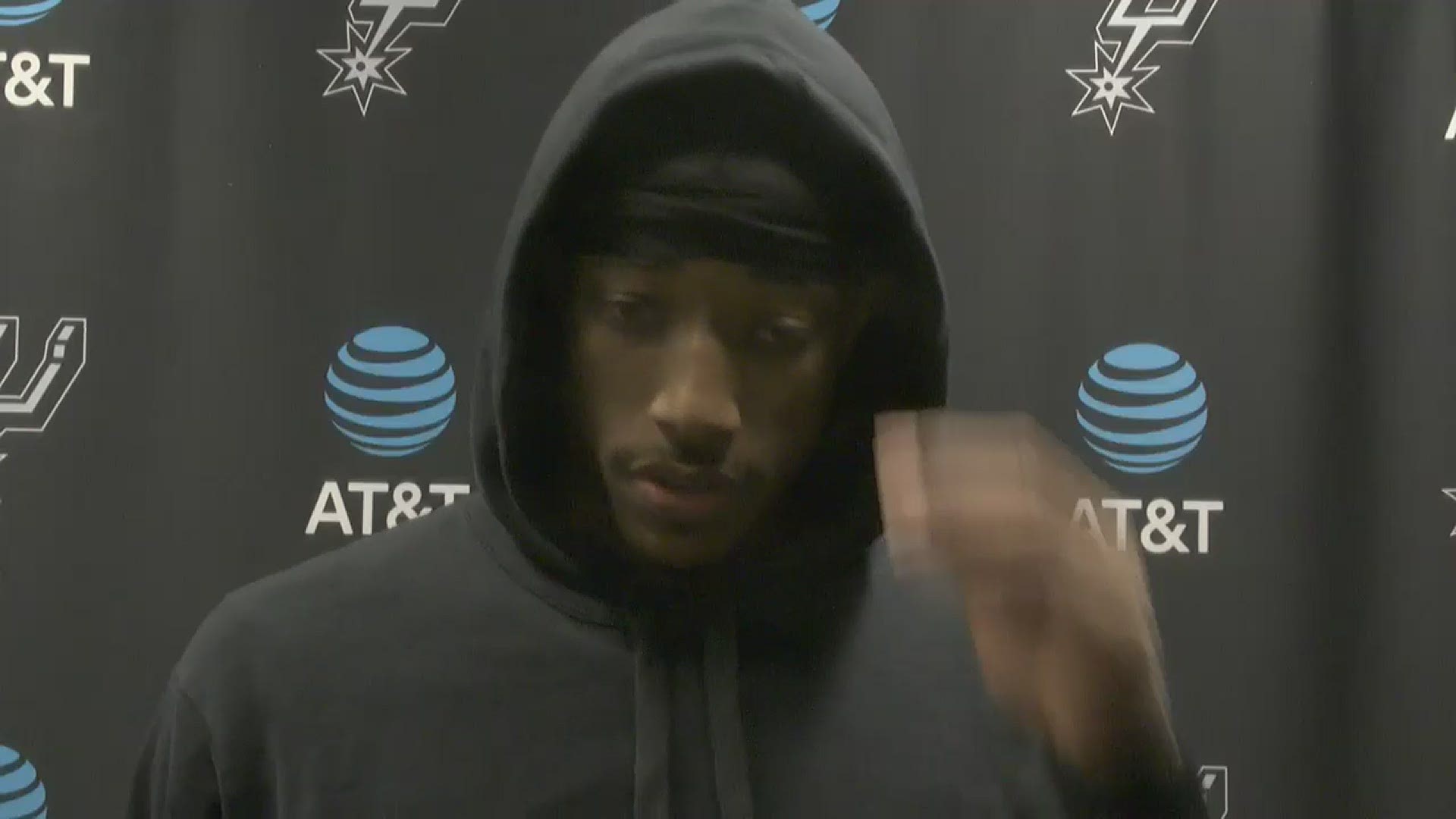SAN ANTONIO — The Spurs are off to an impressive 14-11 start that surprised plenty of folks. They've beaten some of the league's best, but there's still one type of game they just can't seem to win.
After getting dismantled by the Warriors Tuesday night, San Antonio fell to 0-4 in the second game of a back-to-back, or SEGABABA. The question is why are they struggling in these contests, and the answer is a bit deeper than, "they're tired."
Obviously the main challenge is fatigue, but where does that fatigue show up and prevent these Spurs from winning?
Although it often feels like the other teams are shooting the lights out in these games, the percentages have actually been a hair worse for Spurs opponents. San Antonio only forces 12 turnovers per game in these contests, which may speak to sluggish play and a lower energy level than we've come to expect from a group that's usually energetic and disruptive.
More serious, however, is the impact on a normally-potent offense. The Spurs shoot 45% from the floor and 36% from three this year, but that drops to 41% and 34% with tired legs, netting an average of just 96.5 point per game.
Most shots miss short, some long, others right or left. Some miss barely, others miss badly. The point is they miss, a lot, and that does more than just not give them a bucket.
A miss prevents the Spurs from setting their defense, resulting in easy transition opportunities the other way. Pendulum swings in this game are swift and unforgiving, and they build on themselves.
Stretches like that tend to dampen their confidence a bit, which manifests as a palpable team-wide tentativeness that does them no good. At times they look like they're driving, but don't know where they're going. They've looked the least sure of themselves in SEGABABAs. When they lose their mojo, the direction goes with it.
The Spurs average a very solid 25 assists and 11 turnovers per game, but it's 23 to 13 in these losses. The drop might seem small, but so is the margin for error in a close contest.
San Antonio coughed it up 15 times against New Orleans, giving up 22 points in transition and losing by three. They also get nearly 5 fewer free throw attempts per game in SEGABABAs, a significant dip in the readings from one of several aggression barometers. Rebounds, points in the paint, and pace all go down a bit as well.
DeMar DeRozan has been a legit All Star candidate and Dejounte Murray isn't far behind, but they've both struggled in these games.
DeRozan had some of his worst performances of the season with 8, 5, and 12 points, and he missed the rematch against Minnesota after going off in an OT win against them. Murray, who has shown tremendous growth as a point guard, gave it away 6 times in that Pelicans loss.
However, the poor shooting and overall offense is a team-wide problem. Fans will place blame on their favorite scapegoat, pointing at his bad game, ignoring that everyone else pretty much had a bad game too.
So, how much does any of this matter? How much weight can be placed on these losses?
To me, the answer is not much. It's about as reductive as judging employee performance based on what they did on Friday afternoon after an exhausting, productive week. It's not entirely fair, and leaves out the bigger picture.
There are many valid reasons why nobody in the league likes back-to-backs, and why the NBA is working to get rid of them entirely eventually. The tired team is at a competitive disadvantage, plays measurably worse on average, and runs a higher risk of injury.
Nobody likes it, especially not the old school macho types for whom "load management" is a dirty phrase, but it's a reality beyond the control of the players.
35-year-old LaMarcus Aldridge put up 4 points and 4 rebounds in the Pelicans loss, then missed the next three games with a sore knee. He's been out for the last four games after tweaking his hip in... the back-to-back loss against Memphis.
It's not like these guys are getting long weekends either, as the rest of the schedule has been pretty brutal as well. The Spurs are 10-6 in 16 games with only a day of rest, with travel and everything else complicated by COVID. They're 4-1 in the few games with more than a day in between.
The bad news is that San Antonio has been consistently awful in SEGABABAs. The good news is it's an explainable outlier, an anomaly with an easily-identified cause.
Remove those anomalies and what does the rest of the data say? Without the built in disadvantage, San Antonio is shooting nearly 46% from the floor and over 36% from three, scoring 112 points per game en route to a 14-7 record.
Even with the losses they made it to four games over .500, something they never did last year. They've already strung together three three-game winning streaks, something they didn't do once in the previous season.
San Antonio is are already markedly better than they were at any point in that, their first year missing the playoffs in over two decades. They're still getting healthy and growing together as a group, and if they continue on that path they're on their way to playing even better.
By no means are the Spurs perfect, and their warts are on full display when they play on short rest. If you can look past those four of 25, however, you can see the continuing development of a solid team, and even flashes of something special.
After the latest loss, the Spurs are sixth in the West. The competition for the rest of the season is fierce, but if San Antonio makes the playoffs they'll have at least one thing going for them: they won't have to play any SEGABABAs.

